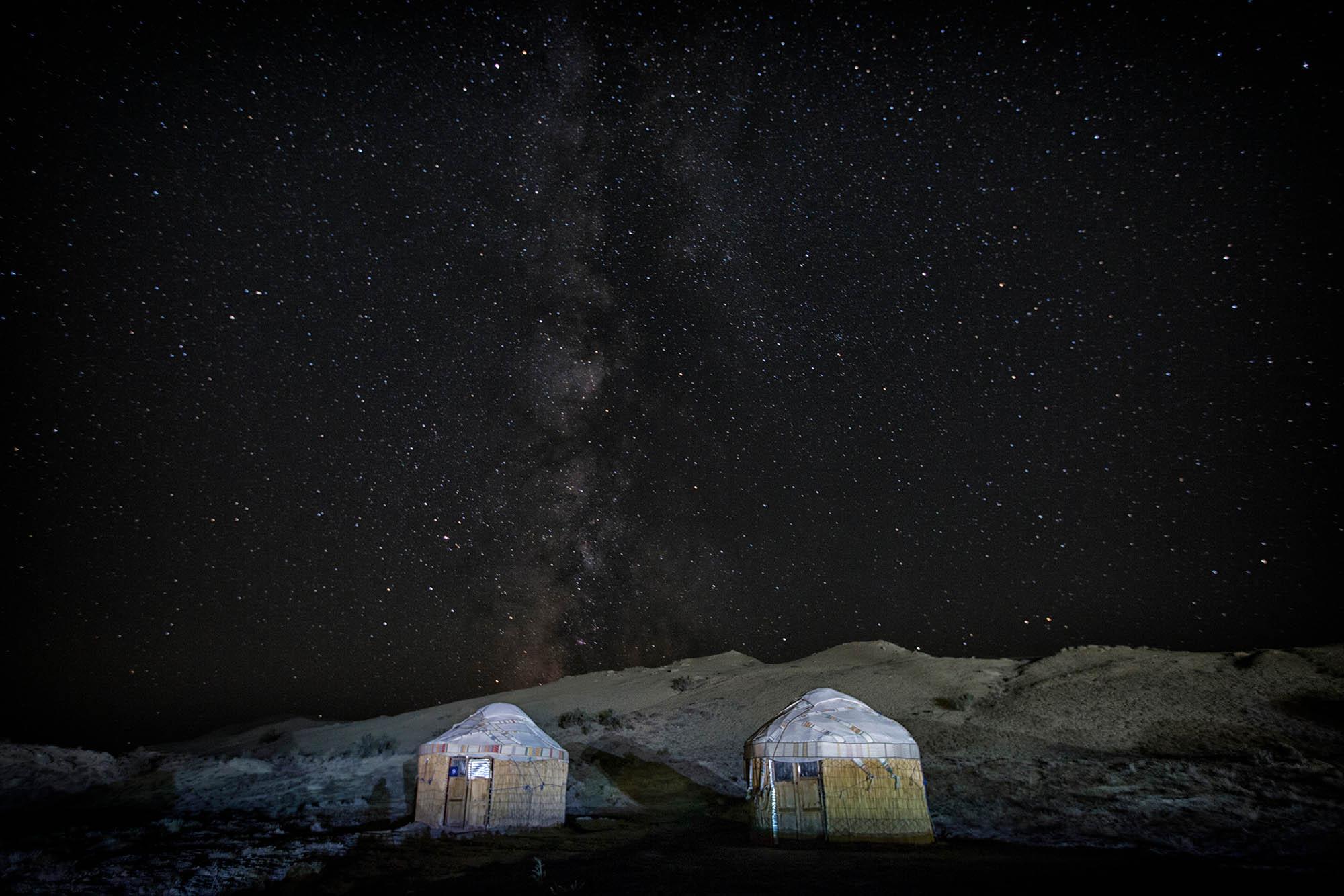Stargazing

It's estimated that about 99 per cent of the world's population lives with some form of light pollution. For people in major cities, for instance, looking up at the night sky usually only reveals a tiny fraction of the stars that could be visible. On the other hand, Central Asia has some of the world's darkest night skies – particularly in the Cold Winter Deserts of Turan.
Whether you join an 'astrotourism' trip to focus on the stars, or whether you just look up at night when you're visiting the deserts, take some time to enjoy what you can see in one of the least light-polluted parts of the planet, where the dry climates also increase the visibility.

Staring upwards, you'll see a night sky exploding with a myriad of twinkling stars. The Milky Way, in particular, is as prominent as ever, a thick band of stars with thousands of little details in its dense concentration. Depending on the season, you should also be able to spot planets like Venus, Jupiter, and Mars. The darkness also brings out the vibrancy of colours that are hidden in the vastness of outer space.

All of the locations included in the Cold Winter Deserts of Turan World Heritage Property offer excellent stargazing opportunities. However, the most remote areas will have the darkest skies, especially around the Aral Sea region in Uzbekistan and Kazakhstan or the Ustyurt Plateau between Kazakhstan, Uzbekistan and Turkmenistan.

